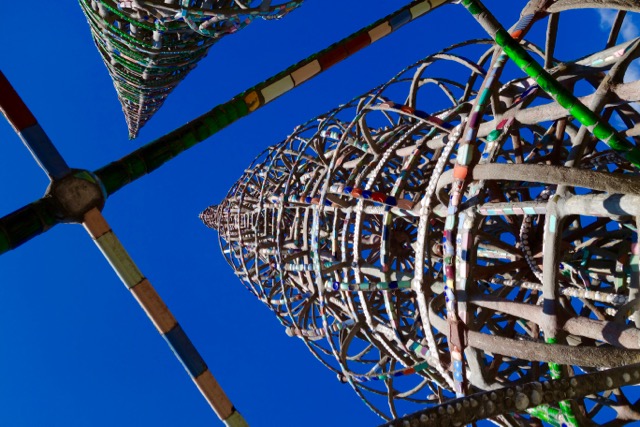
Chances are that, like us, you have lived in LA for a considerable number of years without ever visiting our city’s strange and wonderful masterpiece — Watts Towers. Last week, we had the great pleasure of a full tour of the site with conservators from LACMA who are working to protect this treasure. We urge you to put this adventure on your Do-It-Now List for 2017. It’s an easy pleasure for families to enjoy together and an excellent field trip for out-out-towners.
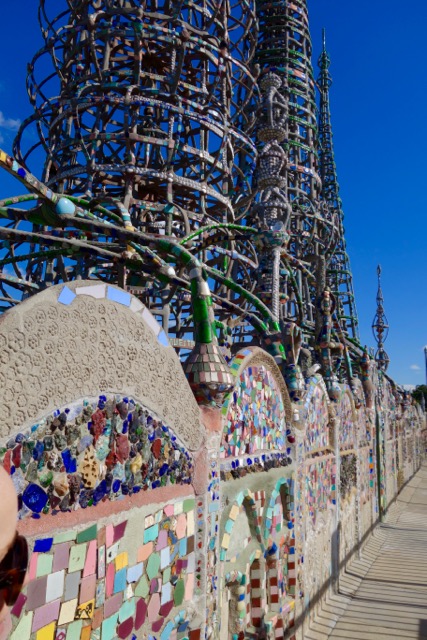
Simon Rodia was born into poverty in Italy but immigrated to America and left a rich and vibrant legacy in Los Angeles, an eccentric backyard building project that is appreciated the world over. Now known as Watts Towers (but called Nuestra Pueblo, our Our Town, by the artist), Rodia’s concrete-covered wire spiral towers, festooned with shards of pottery and colored glass, are the world’s largest single construction created by one individual.
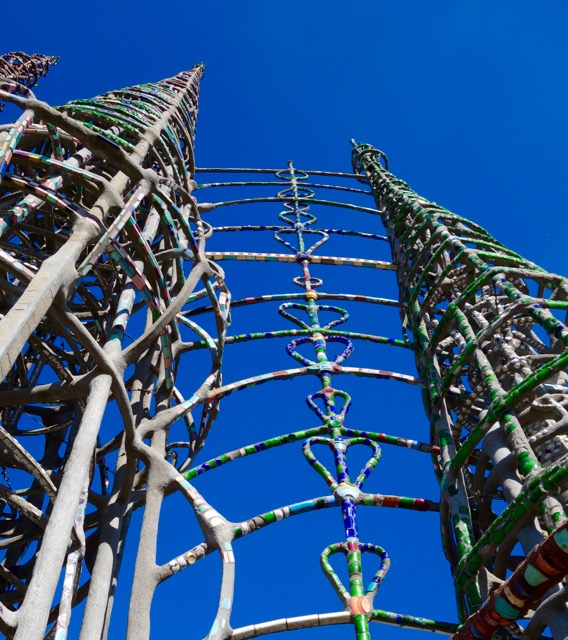
Rodia labored as a bricklayer in Long Beach, and built the towers in his spare time over a span of 33 years — from 1921 to 1954. Then, one day he just packed up and moved north, leaving the property to a neighbor and leaving us very little in the way of documentation for us to know much about him.
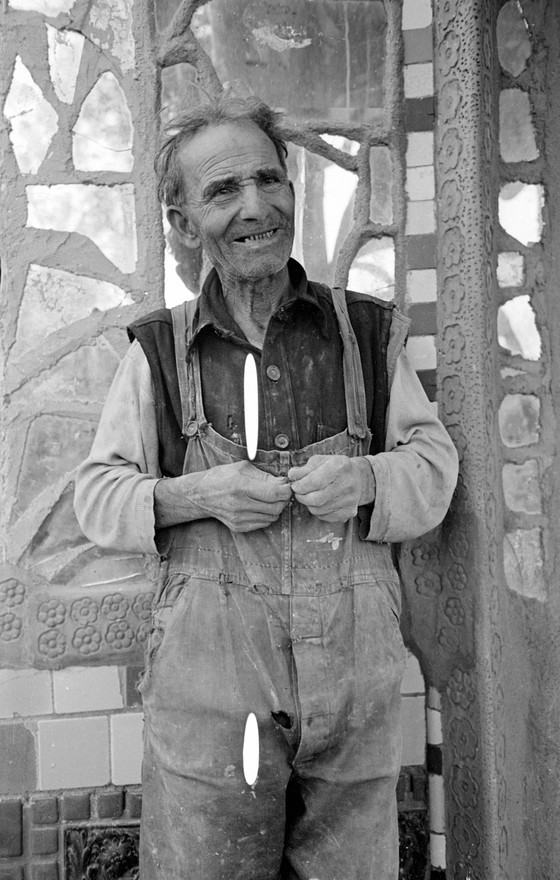
Simon Rodia by Sanford Roth @Museum Associates / LACMA
The property passed from hand to hand for a few years, before being taken over by the State of California, and then the City of Los Angeles. Neighbors instinctively cared about the Towers, and they were protected by the community during the Watts Riots. Watts Towers is listed on the National Registry of Historic Places.
The Towers surprised us at every turn!
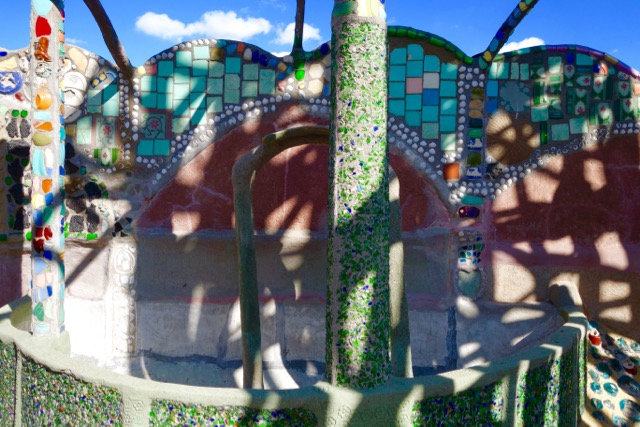
Color: Somehow, we had the impression that the Watts Towers were dark metal contraptions, but up close – they are all about color. With bits of pottery, shells, and bottle shards, the structures sparkle in the light, and each new vista is a revelation. The eye naturally searches for symmetry (and even meaning) in the structural design, yet Rodia’s project defies any type of pattern. Shapes spill to the next, designs are occasionally repeated, but aren’t connected logically. The shorter fountain-like towers have arching tentacles that reach out to sister structures, the highest towers stand alone. You can imagine Rodia coming home from his day job and heading into his yard – every night and on the weekends – to pick up where he’d left off, following some inner voice about what to do next, which section to work on.

Process: Rodia worked alone, but did occasionally pay kids in the neighborhood to search for scraps for his grand project. He loved to press his tools into the cement, as well as sign his initials into the structure. He had an instinctual sense that the structure should need a certain flexibility – and his 17 different wire structures sway slightly in the wind, withstanding various earthquakes and wind over the years. The work being done by LACMA, on behalf of the City of LA, helps to fortify the actual structure, as well as to clean and preserve the bits of shard and decoration that are quite fragile – sadly much has fallen off, or broken over the years. Conservators are on site daily, monitoring the changing environment and protecting the work for posterity.
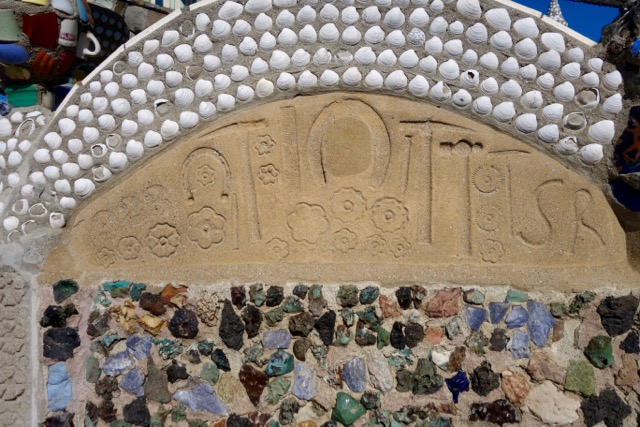
Scope: We also had the misimpression that the Towers would be larger – instead, a mere three spirals reach to the sky from a very modest, triangular plot of land in Watts. That being said, once inside the boundaries of the property, over 17 different structures make up the whole project. Imagine Rodia, born with nothing and working as a laborer in a foreign country, being able to purchase a piece of property on what was (then) the edge of Los Angeles. He was darned if he wasn’t going to do whatever he wanted with his plot of land. Lucky for us he harbored a vision and had the determination to bring it to life.
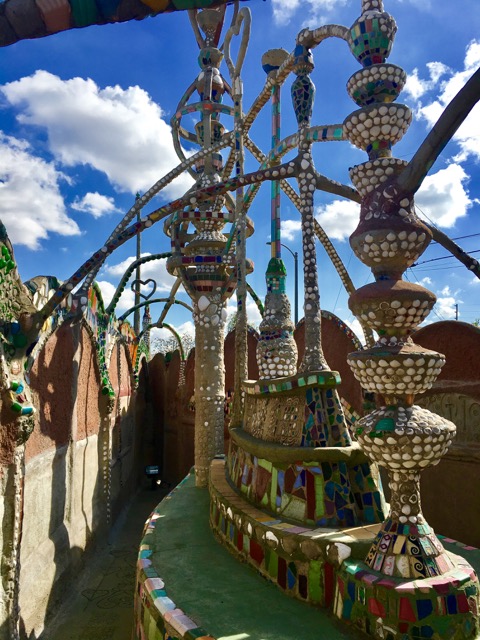
Artistic References: Visiting Rodia’s long-time project, one can’t help but think of Barcelona’s mad architect, Antoni Gaudi (1852-1926), architect of the Spain’s spectacular cathedral, The Sagrada Familia, which remains unfinished even after the master’s death. No one knows what Rodia had in mind. One part of the structure looks like the prow of a ship, and may have referenced religious processions from his hometown in Italy. Sometimes, one man’s madness just becomes something we all enjoy.
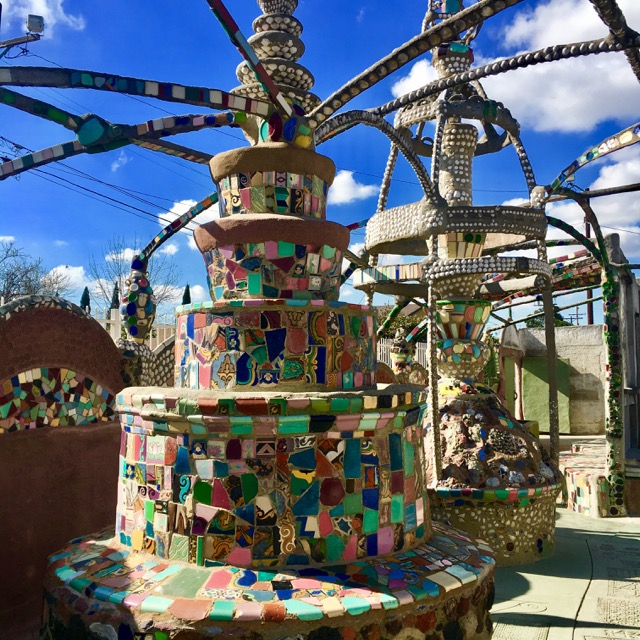
How To Visit: Tours are available from Thursday through Sunday, first come, first served.Be sure to check the website before you travel. Tourists from all over the world visit Watt and a metal fence surrounds the site for protection; visitors are only allowed through the gates on a tour ($7) . The Watts Towers Arts Center Campus is next door, and runs arts education and cultural enrichment programming in the community. Please consider leaving a donation to support their mission and important work.
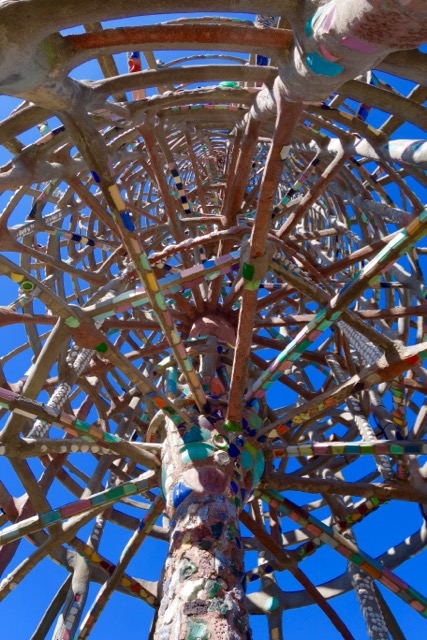
.

